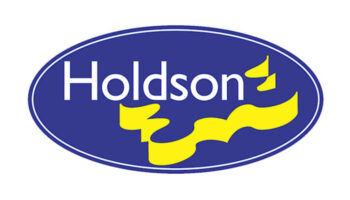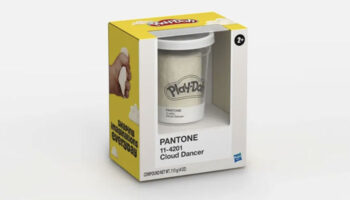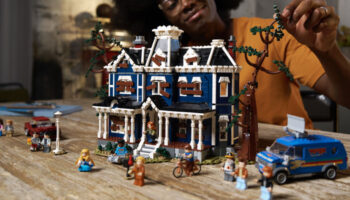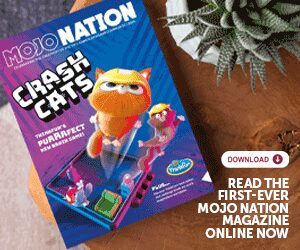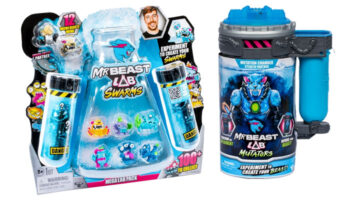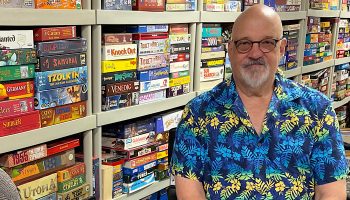Simon Kohler on his new book, Hornby TT:120 – One Size Fits All, and the key to designing authentic models
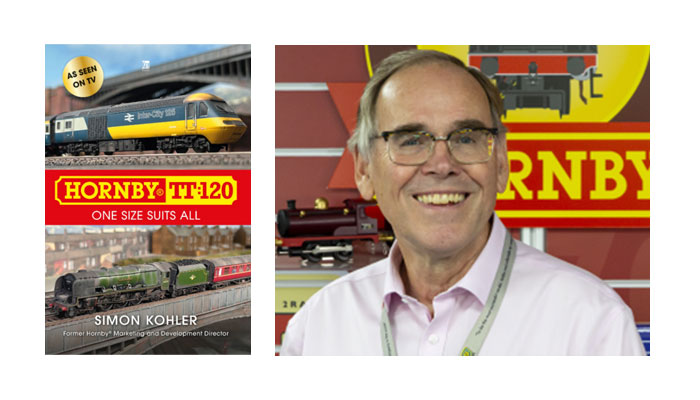
Simon, it’s great to connect. You have just written a book – . What motivated you to write this book about the story of Hornby’s move into the TT: 120 scale?
Hornby TT:120 was the first universally accepted British outline model railway scale introduced into the UK for over 100 hundred years. The existing and more familiar British scales of ‘00’ and British ‘N’ are not compatible with the rest of the world. Hornby TT:120 is, so I wanted to highlight the fact that it was a true universal scale and illustrate that it’s an ideal scale for those with limited space to build a model railway. And possibly the driving force in writing the book was to describe the trials and tribulations that go into producing a new model railway system from Ground Zero.
And was the plan for it to always be a book?
My original thought was to write a couple of magazine articles about the thought process and development of Hornby TT:120… As I typed away, the copy just kept getting longer and longer! Eventually it evolved into a manuscript which I offered up to a publisher and I was lucky enough for them to want to publish it.
How did you find the writing process?
I had to find time while working on my consultancy duties, but on the whole it was quite straightforward. Mind you, I would wake up in the middle of the night thinking of something that I simply had to include in the manuscript, consequently completing it took longer than I thought.
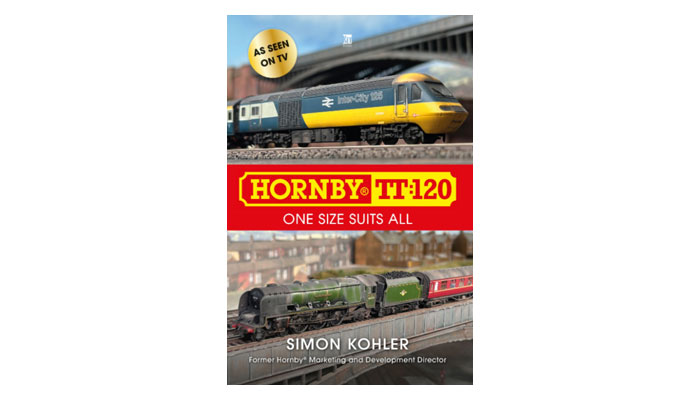
What is your assessment of the UK model railway marketplace at the moment?
Goodness, that question requires an answer that would fill a book.
Ha!
Here goes! 20 years ago there were arguably three major UK model railway producers in a market that was quite buoyant. After the financial crash of 2007/08, things did change. Prices increased which tended to slow the market. Currently, there are arguably a further six model rail producers each producing high quality product at regular intervals and placing it all into a market that’s not exactly increasing.
My opinion, and I am sure others will disagree, is that we have too much product going into a static or shrinking market. Much of the product produced is aimed at the ‘00’ modeller, but there is only so much they can buy. In short, I feel we are close to saturation point. Add to this the viable subject matter left to model, then the ‘00’ market is not looking promising.
Quite a few years ago I could see the way things were heading, which was why I began to champion TT:120. I determined that there was an untapped market for those who wanted to build a model railway but were limited on space. When it launched in October 2022, it was such a new and virgin market that only Hornby were producing TT:120 UK product. Not having an abundance of product available made TT:120 less complicated for the newcomer.
In short, TT:120 is a market that can be developed over time by those brands that wish to invest in the scale. The market is there and it’s growing all the time. In fact, it’s not too dissimilar to where ‘00’ was back in the 1950s and 1960s.
Great answer, thank you. And is there a global market for model railways?
The short answer is yes, but mainly in those countries where railways are present. The popularity in these countries can vary. The US has a healthy ‘H0’ market and a good selection of producers in varying scales. Countries such as Canada, Australia, New Zealand and – at one time – South Africa have a reasonable model railway enthusiast base, mainly driven in the earlier days by folks from the UK emigrating to those countries. Speaking generally, the preferred scale in those markets is ‘00’ but lately the truer scale of ‘H0’ is becoming more common, especially in Australia, but it still has a long way to go to surpass ‘00’.
Modelling railways is also popular in Europe where their preference tends to be ‘H0’, although TT:120, European ‘N’ and the even smaller ‘Z’ scale do have a notable presence. The key European markets are mainly Germany, France, Italy, and Spain, plus interest in the Netherlands and Switzerland.
Hornby International caters for these markets quite extensively, having brands that are recognisable in the respective markets. For example Rivarossi/Lima in Italy, Jouef in France and Electrotren in Spain. They also have a brand, Arnold, that focuses on European ‘N’ gauge and TT:120 – a scale that is quite well established in Germany. This is where UK Hornby TT:120 models can find a market, especially with such famous locomotives as ‘Flying Scotsman’ and ‘Mallard’.
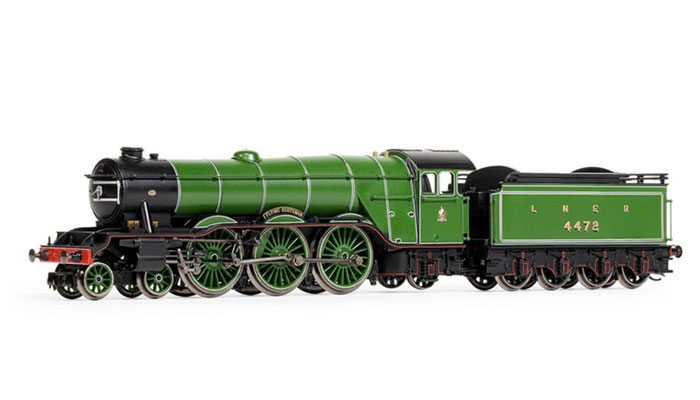
How do you think the sector as a whole can engage with younger consumers?
This really is a million dollar question and one that I and others have continually asked ourselves. For the youngsters, Thomas the Tank Engine is a great ambassador for the fledgling enthusiast, but the interest in that particular blue loco tends to fade by the time the youngster is 6.
After that, much depends on the parents or grandparents. For example, my stepson was never interested in trains – large or small – but his son is. Now this may be because of his ‘Grand Dad Trains’ but I promise you I have never taken him to a model railway exhibition or indeed a railway station! However his parents will always try and find one of the preserved railways dotted around the country to take him to and he loves it.
Days gone by you would find that youngsters interested in model railways kept their hobby until the period in their life which we called ‘motor bikes and girlfriends’, or ‘sex, drugs and Rock ‘n’ Roll’. Nine times out of 10, that’s when you lost them. Eventually, many would return to their hobby after they were in a fixed relationship with one or two children to their credit. For them, it was form of escapism or a hobby they could use to relax and switch off from their day to day issues. You find this with executives in high pressure jobs or celebrities like Rod Stewart, Jools Holland or Pete Waterman who use the hobby to relax.
That said, I will not try and kid anybody, the power of the train set for a youngster is nothing like it used to be. Brands like Hornby continue to try and find ways to engage with these youngsters, but it’s not easy.
In your work with Hornby is there one specific range or product you are most proud of?
In my 40 years at Hornby, I have been involved in many new products and development but I suppose the ones I am most proud of are where I pioneered their introduction on my own – and quite often against some formidable resistance. Sub-brands like Hornby RailRoad – a range of budget priced model railway items including locomotives, coaches and wagons, aimed at youngsters, or those on a fixed budget.
However, I think I am most proud of Hornby TT:120. I tried for years to convince those who would listen that TT:120 was an untapped market. TT:120 was available in Europe but there were no UK-centric models available. In fact, on the face of it, there was no demand at all! However, I continued to be convinced that there would be a demand and after some years of an uphill struggle, I was able to convince Lyndon Davies – the then new CEO at Hornby – that there was a market… Well hidden, but there.
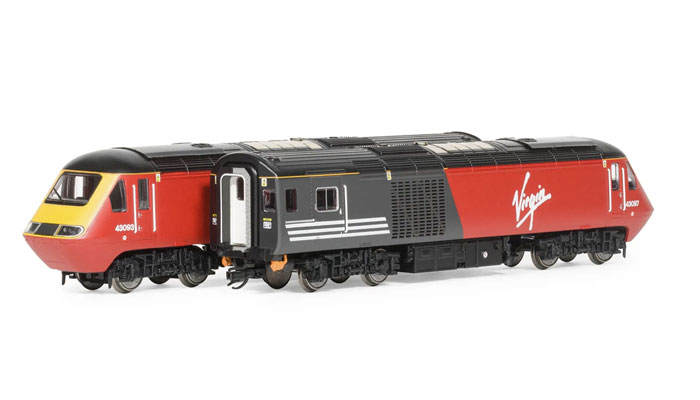
Can you talk us through the development of that range?
It involved not an inconsiderable investment in a track system, locomotives, wagons, coaches and buildings. In October 2022 the range was launched with, at first, some negative comments – but soon those naysayers were shouted down and interest began to grow and continues to do so. My belief that there was a demand for a UK-centric TT:120 system, especially as it was compatible in all forms with what was available in the rest of the world, has proven to be correct. So yes, I think I am most proud of Hornby TT:120. And now, the full and complete story is told in my book Hornby TT:120 – One Size Suits All. Actually, I am quite proud of that book as well!
When designing models, is there a right way to go about it to ensure accuracy and authenticity?
Firstly, if original drawings can be obtained then that is a great start for obvious reasons. Next, locate and absorb any reference books that can be found on the subject. If there is an example in existence, arrange a visit and take plenty of photographs –particularly concentrating on specific details. The designer must also look out for any variances if there’s more than one example of the subject and allow for such variances in their design. These days, with the advent of more refined 3D printers, designs can be proved before going to the expense of tooling.
And how long does it take to design a Hornby model?
To design, tool, develop, refine and manufacture a new Hornby locomotive, depending on the complexity, can take up to 18 to 24 months. However, a more recent model Hornby introduced took at least 12 months as there were so many different variances of that particular class of locomotive that needed to be drawn. A truly mammoth task, but accuracy is all. One misplaced rivet or mis-shaped chimney can seriously effect the sales of that model for years to come, even if the errors are corrected. A question of ‘Give a dog a bad name!’
You spent a lot of time in your career negotiating and securing licenses for Hornby. What advice would you give to people negotiating licensing deals these days?
I think the best advice is to be honest and straightforward. Do not try to be clever as there are very few truly clever people in this world, therefore assume you are not. Be fair in your requirements but don’t be afraid to challenge a paragraph or clause that may come back and bite you, or may be impossible to comply with. An agreement has to be fair for all parties so keep that in mind.
To me, an agreement is a set of rules that need to be adhered to, so do not try and circumnavigate them as this will end in tears. Be honest at all times with the licensor. If a mistake has been made be honest and tell them. Rather that than they find out for themselves – and trust me, they will find out!
Can you tell us about ‘one that got away’? A license or deal you missed out on?
Scalextric had licenses with McLaren, Williams, Jordan and Benetton, but what I really wanted was a license with Ferrari F1. I spent hours on the phone talking to their licensing manager. I sent him projections, market plans and as much detail as I could put together, with him all the time saying the license would be coming “but could I send him another piece of information”. I was quietly confident that we would obtain an agreement… That is until I was informed by one of Hornby’s international accounts that an exclusive license had been awarded to one of our competitors. I did drop Ferrari a fax saying how disappointed I was at not being told of their decision directly, but I never received a reply.
I imagine you dealt with a lot of brand owners who hadn’t ever licensed their brand to third parties. How did you sell the benefits of licensing to these companies?
In the early days, it was always a quick phone call and an agreement to use a brand’s logo on a wagon for example, which was dealt with in minutes. In such instances, my approach was based around quid pro quo by saying their brand would be seen in over 100,000 catalogues, shop shelves and quite possibly on a Hornby advert – and at no cost to them. In some instances, this can still be the case, however most companies are quite rightly precious about their brands and consequently believe it has a value. In such cases, the quid pro quo approach has ‘left the building’ and in its place an additional revenue stream is seen by the licensor – which is fair enough.
The key thing is that you build up a rapport with the licensor. For example, years ago I had to negotiate a deal with McLaren F1. For years Hornby had a great association with the team, but when I approached them for a license on one of their F1 cars, the advance and royalty required was too great… There was no chance that we would be able to make the deal balance. I was invited down to McLaren and I sat with Ron Dennis and explained the situation. He quite magnanimously adjusted the terms so we had a fair deal and our association with the team continued – and still does.
I go back to my previous answer where licensing is concerned. Be honest and fair, as well as respecting their brand. It’s one of the reasons why Hornby had the Thomas the Tank Engine license for over 30 years.
What advice would you give to a designer looking to break into the world of models, model-making and collectibles?
With the amazing advances in design software – which Hornby tends to keep pace with – it’s important you have designers who can make the most of such equipment. Hornby has some superb designers with years of experience, however they also employ to great effect young graduates who can bring a different, modern perspective to a design team. The new designers are usually tasked initially with something relatively straightforward to design but fairly soon, having proved their capability, are given a project to really show their worth. Of course, they are not expected to have all the design answers that may crop up when working on a new project, which is why they are encouraged not to be afraid to ask advice from those with more experience.
So what advice would I give to a young designer who is looking to break into the world of models. Write to as many model companies as you can and include your CV, the design programs you are most familiar with and images of some of the items you have created. No doubt there will be plenty of ‘thank you but no thank you’ responses, but the young hopefuls should ask for their details to be kept on file and while they are waiting for that call, they should keep pace with the design program developments that are happening all the time.
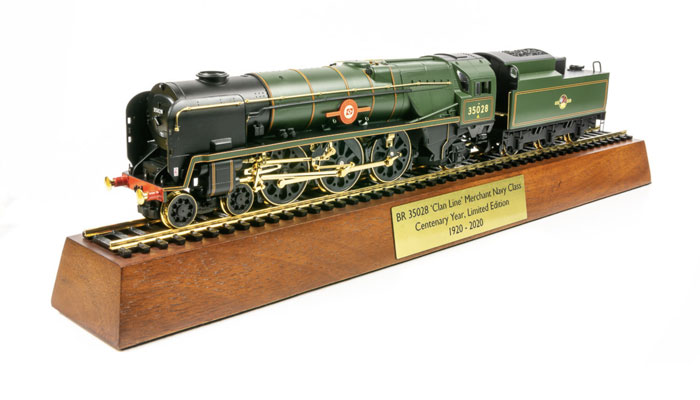
Finally, if you had to pick a favourite product from your time with Hornby, what would you pick?
Without question it would have to be the BR Merchant Navy Class ‘Clan Line’ locomotive. This model was launched in 2000 and was the first to be designed by Hornby in the UK, but developed and manufactured in the Far East. The body and chassis detail, along with a totally new style of drive mechanism, were like nothing else that Hornby had ever produced. It heralded a new era for the company. This model locomotive helped turn Hornby’s fortunes around and set it on a path of designing and producing ever improving models that it continues to this day.
–
To stay in the loop with the latest news, interviews and features from the world of toy and game design, sign up to our weekly newsletter here




